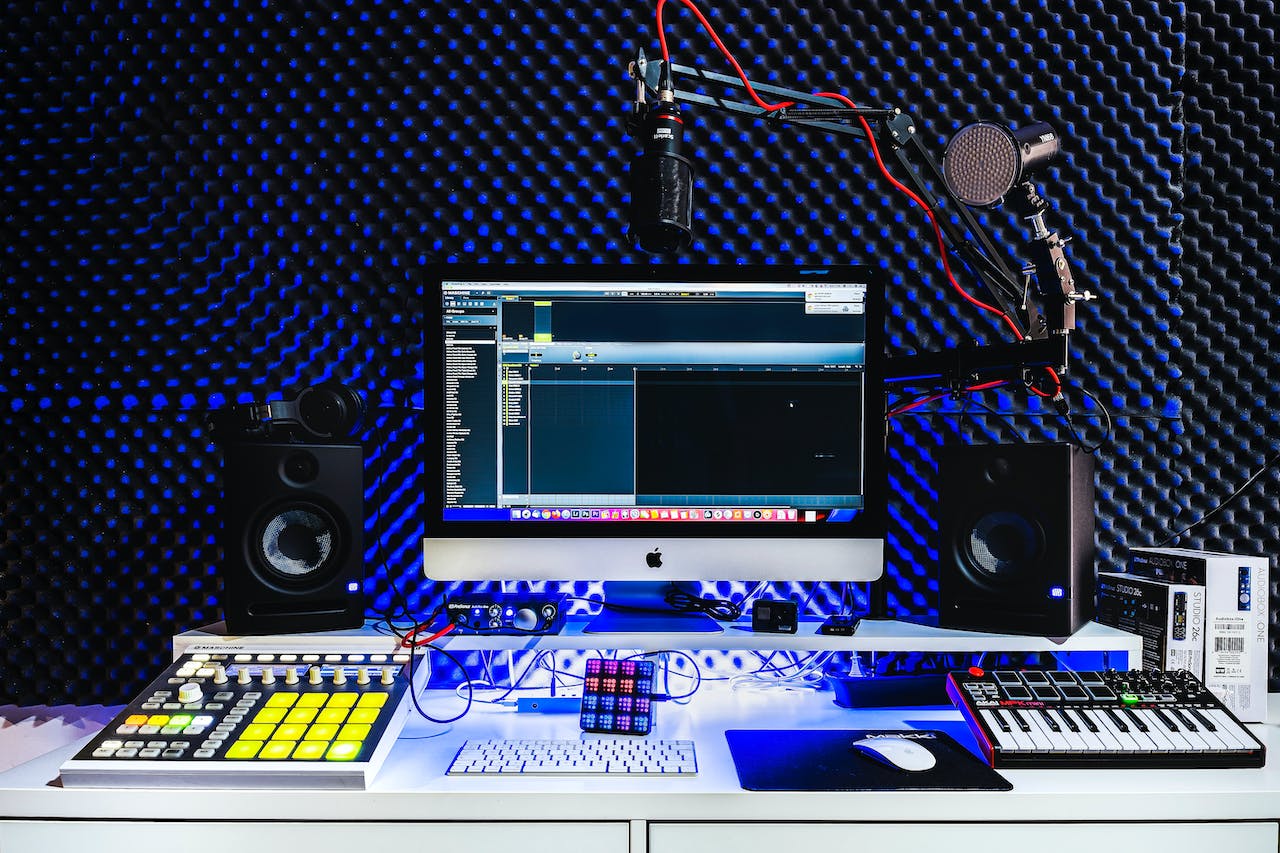Guitar backing tracks have become an indispensable tool for musicians seeking to enhance their practice sessions and live performances. This article explores the effective use of backing tracks, showing an easy way on how to use guitar backing tracks providing objective insights and analytical guidance.
By selecting appropriate tracks, setting up equipment correctly, and effectively playing along with the track, guitarists can optimize their learning experience and musicality. Additionally, valuable tips are offered to maximize the benefits derived from utilizing these innovative tools.
Embracing guitar backing tracks can undoubtedly revolutionize one’s musical journey.
Key Takeaways
- Consider factors such as tempo, key, and genre compatibility when selecting the right backing track.
- Arrange and configure necessary equipment properly, and troubleshoot common issues to ensure smooth setup.
- Adjust volume levels, use EQ settings, and pay attention to dynamics when playing along with the backing track.
- Experiment with improvisation techniques, different scales, modes, and melodic ideas to enhance musicality and creativity.
Selecting the Right Backing Track
When selecting a backing track for guitar practice, it is important to consider factors such as tempo, key, and genre compatibility. Choosing appropriate genres ensures that the backing track aligns with the style of music you want to play and helps you develop skills specific to that genre. It allows you to explore different techniques and musical ideas within a specific context.
Finding high quality tracks is crucial as it ensures accurate representation of instruments and sound production, enhancing your overall practice experience. High quality tracks provide clarity in terms of tone and dynamics, allowing for better focus on technique development. Additionally, they offer a more realistic performance environment, helping build confidence when playing with other musicians or in live settings.

Setting Up Your Equipment
To properly prepare for playing along with backing tracks, it is essential to arrange and configure the necessary equipment. The following table outlines the typical equipment requirements for setting up a guitar and audio system:
| Equipment | Description |
|---|---|
| Guitar | Electric or acoustic instrument capable of outputting sound |
| Amplifier | Device that amplifies the guitar signal to be heard at higher volumes |
| Audio Interface | Connects the guitar to a computer or recording device for digital processing and playback |
| Speakers or Headphones | Output devices to hear the backing tracks and your own playing |
When setting up this equipment, common issues may arise. Troubleshooting tips include checking cable connections, adjusting volume levels, ensuring proper power supply, updating drivers or software, and verifying compatibility between devices. Additionally, user manuals and online forums can provide valuable guidance in resolving setup problems. By addressing these equipment requirements and troubleshooting potential issues proactively, players can enhance their experience with guitar backing tracks.

Playing Along With the Backing Track
One important aspect of playing along with backing tracks is ensuring that your instrument’s sound is properly balanced with the track’s volume for an optimal musical experience. To achieve this, there are several techniques and considerations to keep in mind:
- Adjust the volume levels: Balance the volume of your instrument with the backing track so that both can be heard clearly without overpowering one another.
- Equalization: Use EQ settings on your instrument or amplifier to adjust frequencies and ensure a well-balanced sound.
- Dynamics: Pay attention to dynamics while playing along, varying your volume and intensity to match the track.
- Timing: Practice playing along with the backing track to improve your timing and synchronization.
- Improvisation techniques: Experiment with different scales, modes, and melodic ideas to add creative elements to your performances.
Additionally, creating your own backing tracks allows you more freedom in terms of style, tempo, and chord progressions. This allows for greater exploration and innovation in your playing.
Tips for Getting the Most Out of Guitar Backing Tracks
An effective way to optimize the experience of playing along with recorded accompaniment is by carefully adjusting the volume levels and equalization settings to ensure a balanced sound. This allows the guitarist to hear both their own playing and the backing track clearly, enabling them to make precise adjustments and improvements as needed.
Additionally, incorporating improvising techniques can enhance the overall musicality of the performance. By experimenting with different scales, modes, and melodic ideas over the backing track, guitarists can explore new musical territories and add their own unique touch to the music.
Furthermore, creating your own backing tracks can provide an opportunity for personal expression and innovation. By composing or recording custom accompaniments tailored specifically to one’s playing style and preferences, guitarists can further enhance their improvisational skills and create a more engaging musical experience.

If All Else Fails –
Best Websites for Guitar Backing Tracks
Although some says(paid), many do offer Free Trial Options
- LickLibrary (paid)
- Epidemicsound.com (free trial)
- YouTube (Search for YouTube Audio Library free)
- Karaoke-Version (Freemium – Best for All Backing Tracks)
- BackingTracksPro (paid)
- Ultimate-Guitar (paid)
- Steve’s Trax Backing Tracks (paid)
- Backtrackit App (freemium)
- GuitarToneMaster (free)
- GuitarMaps (free)
- GuitarVoice.com (free)
- SoundCloud (paid)
- GuitarVoice.com (free)
- Pond5 (freemium)
- Fiverr (Done For You Service)
- Amazon: https://amzn.to/3XPsz4Y
Final Word on How to Use Guitar Backing Tracks
In conclusion, guitar backing tracks are a valuable tool for musicians looking to enhance their practice sessions and improve their playing skills. By selecting the right backing track and setting up your equipment properly, you can create a seamless experience that allows you to play along with professional-grade accompaniment.
Remember to utilize tips such as adjusting the volume levels and experimenting with different genres to get the most out of your guitar backing tracks. With dedication and practice, you can take your guitar playing to new heights!


